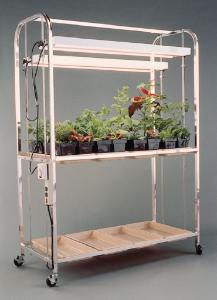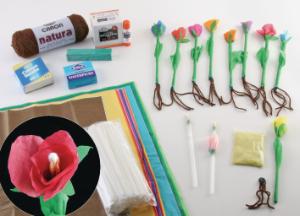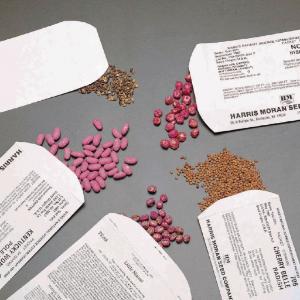Horticulture Science and Careers
High School
For centuries, motherhood has been synonymous with spring and plants because they symbolize life and fertility. In 1908, Anna Jarvis held a memorial for her mother in West Virginia, considered the first Mother’s Day. During the first Mother’s Day memorial, Anna handed out white carnations because it was her mother’s favorite flower. Since then, flowers have been synonymous with Mother’s Day, with carnations being the official flower. So, let’s hear it for the women who “rose” to the occasion!
You can use the huge presence of beautiful Mother’s Day flowers, plants, and fruit baskets to engage your students in the science of horticulture.
Applied Plant Science
Horticulture is an applied science. It is the only plant science that incorporates plant science and aesthetics. It’s the science and art of producing edible fruits, vegetables, flowers, herbs, and ornamental plants, improving, and commercializing them sustainably.
There are several major areas within horticulture science.1 They include:
- Olericulture: the production of vegetables.
- Pomology (aka fruticulture): the production of fruits and nuts.
- Viticulture: the production of grapes (primarily for winemaking).
- Floriculture: the production of flowering and ornamental plants.
- Turf management: the production and maintenance of turf grass for sports, leisure, and property use.
- Arboriculture: the cultivation and care of individual trees, shrubs, vines, and other perennial woody plants, primarily for landscape and property purposes.
- Landscape horticulture: the selection, production, and care of plants used in landscape architecture.
- Postharvest physiology: the management of harvested horticultural crops to retard spoilage while stored or transported.
If you have students with green thumbs, they’ll be heartened to learn that horticulture contributes to our environment’s quality, beauty, sustainability, and rehabilitation.
Careers in Horticulture
Over 24 million people are employed in agriculture in the United States. Horticulture careers provide many interdisciplinary opportunities that can fit every interest and passion. Share this list of occupations with your students to plant a seed about the excellent opportunities to use their STEM skills.
Production & Sales
Many horticulturalists operate businesses or manage orchards, vegetable farms, greenhouses, flower or plant shops, nurseries, landscaping services, garden centers, or food processing firms.
Public Gardens
Students who consider themselves “a people person” may be surprised to learn about careers in managing landscapes and plant collections in public gardens and conservatories. If they like to help communities and love plants, they can get the best of both worlds with this option!
Marketing & Communications
A career path in marketing includes supporting the sale of fruits and vegetables, seeds, cut flowers, house plants, floral arrangements, or nursery stock. Horticulture majors could also become buyers or wholesale distributors.
Research
Horticulture researchers help improve the yield and quality of fruits, vegetables, flowers, and ornamental plants. They also develop methods for handling, storing, and breeding plants. Plant nutrition and growth regulation are fascinating areas of plant research.
Landscape Construction & Management
Some students may want to dig into fields related to residential and commercial landscape projects as landscape contractors and installers. Many STEM skills are used for these jobs, including interpretation of blueprints, estimating and bidding, and installing plant material and hardscapes (patios, walls, arbors, etc.).
Pest Management
Pest management includes working with state and federal regulatory agencies, agricultural suppliers, processing corporations, large farm organizations, and as agricultural agents to help keep plants healthy and thriving.
Use your lesson plans to help students investigate exciting facts about plants and the field of horticulture. Who knows, one day they could develop a new plant variety and name it— The <insert their favorite science teacher’s name here> in your honor!
Happy Mother’s Day! Hosta la vista!
1. Preece, John E.; Read, Paul E. (2005). The biology of horticulture.
Recommended Products
[StartProductBlock]

GrowLab® Classroom Gardening Center
A sturdy, aluminum-frame plant center creates a full-scale gardening center in the classroom.
[EndProductBlock]
[StartProductBlock]

Build a Flowering Plant Model: An Inquiry
Hands-on construction activity helps students build colorful models of flowering plants to reinforce the structure and function of each part.
[EndProductBlock]
[StartProductBlock]

Ward's® Seed Germination Kit
Students determine the seeds’ adaptability and hardiness and study plant growth in monocots (corn), dicots (bean, pea, radish), and gymnosperms (pine) under a range of environmental conditions.
[EndProductBlock]
